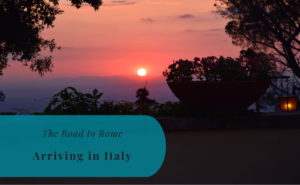On day 2 of our quick visit to Italy, we decided to go to Brescia, one of the most important cities in northern Italy. On the first day we visited Lake Como, read more about it here >>
A dear child has many names and so does Brescia. This industrial capital of Italy is known as Leonessa d’Italia and it offers its visitors a lot of historical sights, tasty food, and a charming atmosphere. It is also the home to Italian caviar and Franciacorta wine. We liked the city very much and would recommend it as a day trip to anyone visiting northern Italy.





Brescia: A Short History
It is difficult to write a short history for a city that has been through so many invasions, wars and battles. The city is situated on the foot of the Alps and near the lakes Garda and Iseo. It is more than 3,200 years old. Visitors can enjoy the best-preserved Roman public buildings in northern Italy and a medieval castle.
Here are some picks from the history of Brescia. You can read the full story here >>
The city has played a major role in the history of the violin. From 1490 to 1640 Brescia was home to a magnificent school of string players and makers, all styled “maestro”.
The sack by the French in 1512 left deep scars. The sack took place after the city had revolted against French control. The French controled Brescia until 1520, when Venetian rule resumed.
Who knew what a struck of lightning could cause. In 1769 a massive explosion destroyed one-sixth of the Brescia and killed 3,000 people. The explosion was the result of a lightning that struck the Bastion of San Nazaro, igniting 90,000 kg of gunpowder.
The city’s nickname, the Lioness of Italy, stems from the Ten Days of Brescia. This refers to a revolt that occured in March 23 to April 1, 1849. Some 1,000 citizens were killed during the battle between Brescia and the Austrian Empire.
The Piazza della Loggia bombing in 1974 killed eight people and wounded over 1000 during an anti-fascist protest in the city.





Top Things To Explore in Brescia
Let’s be clear. If you want to see all of Brescia, you need more than one day. For instance, the city has 72 fountains. So, you could go chasing fountains. Here we have collected some of the sights that we found very impressive. The city is quite compact so you can walk everywhere. There are some hills and cobblestones, so remember to bring comfortable shoes.
1. Monumental area of the Roman forum
At this archaeological complex you find the most well-preserved Roman buildings in northern Italy. The oldest building in the forum, the republican sanctuary, is from 1st century BC. The buildings in the complex are:
- Republican sanctuary
- Capitolium of Brixia
- Roman theater
2. Monastic complex of San Salvatore-Santa Giulia
Desiderius founded the monastery in 753. Nowadays a museum, the monastic complex is famous for the diversity of its architecture. There are also several churches on the site. It includes Roman remains and significant pre-Romanesque, Romanesque and Renaissance buildings. The complex is a UNESCO World Heritage Site.
3. Piazza della Loggia
This wonderful square is a renaissance piazza. The Palazzo della Loggia houses the current Town Hall. At the east side of the square stands a tower with a large astronomical clock (mid 16th-century).
4. Duomo Vecchio & Duomo Nuovo
The Old Cathedral and the New Cathedral stand together on a square. The old cathedral is a circular Romanesque church that dates back to the 11th century. Near the entrance is the pink marble sarcophagus of Berardo Maggi, while in the presbytery is the entrance to the crypt of San Filastrio.
It took more than 200 years to build the new cathedral. It is the largest Roman-Catholic church in Brescia and it was opened in 1825.
Both cathedrals are decorated with masterworks by Italian artists.
5. Piazza della Vittoria
Piazza della Vittoria is a contrast to the ancient constructions of Brescia and it is a fine example of Italian Art Déco. Architect Marcello Piacentini built the square in 1927 and 1932. The L-shaped square is surrounded by Torrione (the first skyscraper built in Italy), Palazzo delle poste (“Post Office building”), Torre della Rivoluzione (“Tower of the Revolution”) and some other buildings.
6. Castello
The castle also goes by the name Falcone d’Italia (“falcon of Italy”). A steep walk leads to the castle atop Cidneo Hill at the northeast angle of the town. The castle was built between the 13th and the 16th century and it is among the largest castles in Italy.
The view from the castle is spectacular. There are also some museums on the site. The Arms Museum has a fine collection of weapons from the Middle Ages onwards. The Risorgimento Museum is dedicated to the Italian independence wars of the 19th century. Visitors can also enjoy an exhibition of model railroads as well as the astronomical observatory.



Getting There And Back
Brescia is located on the Milan-Venice railway and it’s an important connection point. We took a direct train from Bergamo. The city also has high speed trains to Milan, Rome, Naples, Turin, Bologna, Florence and Venice.
Three motorways connect Brescia with the rest of Northern Italy. There is an airport but it seems like it doesn’t have so many flights. Bergamo Airport is 50 kilometers away.









